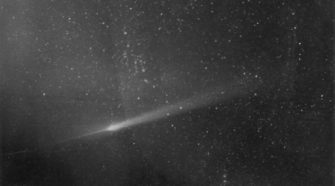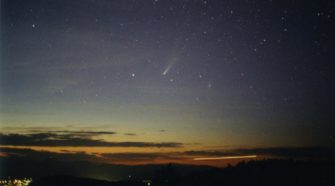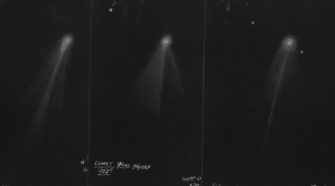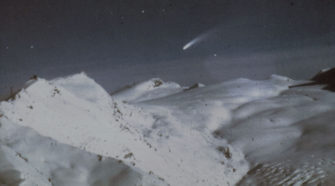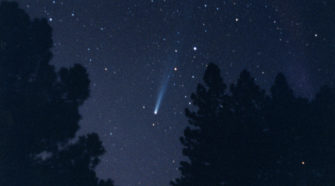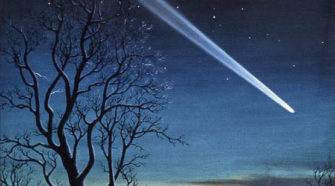Comet
Comet of the Week: Arend-Roland 1956h
Perihelion: 1957 April 8.03, q= 0.316 AU There weren’t any bright comets that appeared the year I was born, 1958, but two bright comets appeared the previous year. These two objects were the brightest comets to become easily visible from the northern hemisphere since the return of Comet 1P/Halley in 1910. The first of the …
Comet of the Week: 153P/Ikeya=Zhang P/2002 C1
Perihelion: 2002 March 18.98, q = 0.507 AU One of the many successful Japanese comet hunters of the 1960s was Kaoru Ikeya who, coming from a family of modest means, built a homemade telescope for the equivalent of US$20 and began to hunt comets with it. He discovered his first comet in 1963 and would …
Comet of the Week: 12P/Pons-Brooks
Perihelion: 2024 April 21.00, q = 0.781 AU For this week’s “Comet of the Week” I am turning my eye towards the near-term future: a comet that I hope to see within the next few years. While there perhaps is no exact formal definition of the term, the phrase “Halley-type comet” is generally used for …
Comet of the Week: Bennett 1969i
Perihelion: 1970 March 20.04, q = 0.538 AU One of the underlying foundations of “Ice and Stone 2020” is the fact that it marks the anniversary of my observations of my very first comet, Comet Tago-Sato-Kosaka 1969g – also, incidentally, the first comet ever observed from space. (I discuss this comet, including my observations of …
Comet of the Week: Hyakutake C/1996 B2
Perihelion: 1996 May 1.40, q = 0.230 AU Following the discovery of Comet Hale-Bopp in mid-1995, the entire world was awaiting its expected good show in 1997. But while we were waiting, another comet came by and provided another stunning show. This object was discovered on January 30, 1996 by a Japanese amateur astronomer, Yuji …
Comet of the Week: The Great Comet of 1843
Perihelion: 1843 February 27.91, q = 0.006 AU For the first time in “Ice and Stone 2020,” a Kreutz sungrazer is my “Comet of the Week.” Some of the members of this group of comets have been among the brightest and most spectacular comets in all of recorded history, and as a group they are …

